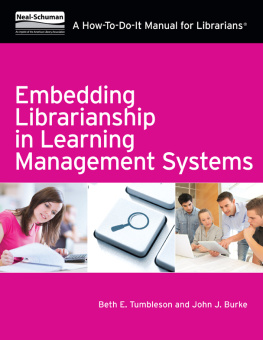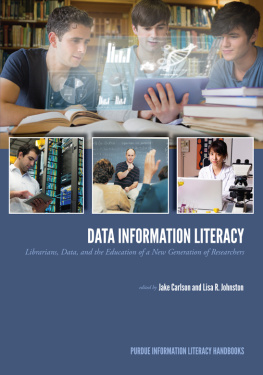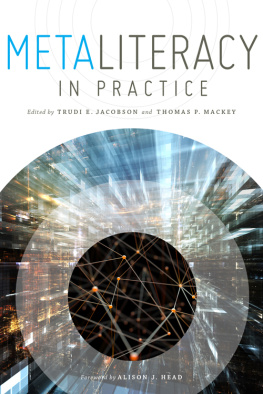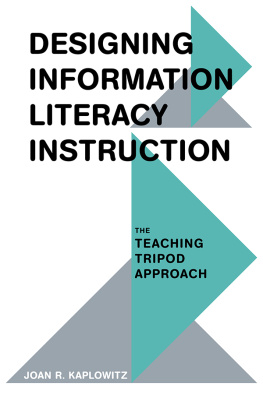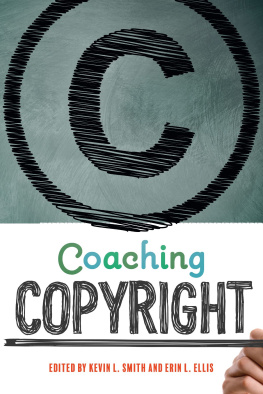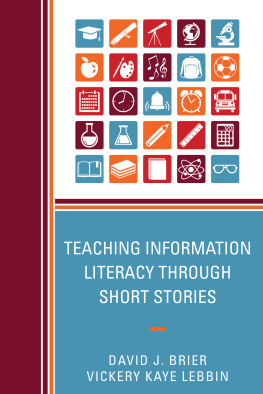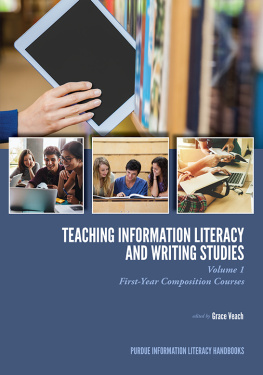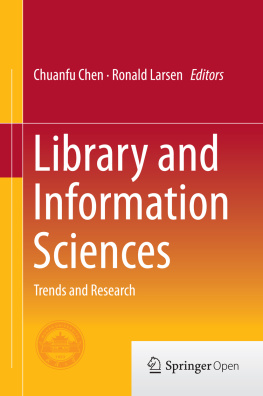Mohamed Berray
The Framework for Information Literacy for Higher Education is a flexible cluster of concepts that builds on existing knowledge and contextual understandings of disciplines to enhance holistic learning experiences. Conceptual learning using the Framework completes knowledge gaps, addresses stumbling blocks and learning deficiencies, and introduces pedagogical methodologies rooted in foundational concepts of the disciplines in which they are applied. These foundational concepts, later referred to as threshold concepts, are a cognitive framework of curricular inquiries that identify fundamental ideas essential to comprehend the subject. To help students attain this threshold of proficiency and comprehension, librarians have collaborated with teaching faculty to identify core concepts in their disciplines and have designed disciplinary engagements through assignments and hands-on labs that cultivate immersive learning experiences.
This chapter will introduce experiences applying threshold concepts through curriculum mapping in course offerings in the Political Science Department at Florida State University (FSU). In collaboration with faculty at the Political Science Department, the political science librarian mapped student learning outcomes in core courses in the international affairs specialization with information literacy threshold concepts in library instruction. This exercise enhanced collaboration between the FSU Libraries and the Political Science Department and contributed to designing learning spaces that blend cognitive, affective, and behavioral learning skills. This recognition for different student learning styles and abilities resulted in a customized curriculum that caters for the individual needs of students and empowers them as both creators and consumers of knowledge.
THRESHOLD CONCEPTS
According to Jan H. F. Meyer and Ray Land, threshold concepts represent core ideas and processes that define ways of thinking and practicing).
Figure 1.1. Linear Framework of Dispositions
There are five characteristics of threshold concepts:
- Transformative: an ontological and a conceptual shift in the learners perspective and subjectivity; involves a reconfiguration of the learners prior conceptual schema
- Troublesome: can seem incoherent and counterintuitive to the learners dispositions, and can be troublesome to acquire and integrate in the learners experience
- Irreversible: threshold concepts, once learned cannot be unlearned
- Integrative: brings together different aspects of the subject that previously seemed unrelated
- Bounded: delineates a conceptual space serving a specific disciplinary purpose; eliminates potential confusion in the use of disciplinary language commonly used in everyday life; extended use of disciplinary language (discursiveness) is indicative of the learners grasp of key concepts in the discipline
According to Meyer and Land, the characteristics of threshold concepts are rooted in and developed around stumbling blocks in disciplinary learning. As a result, they are identifiable in the spectrum of student learning objectives, allowing for the application of the appropriate concept.
The Association of College and Research Libraries (ACRL) Framework for Information Literacy for Higher Education, developed with the characteristics of the threshold concepts in mind, is made of six frames:
- Authority Is Constructed and Contextual
- Information Creation as a Process
- Information Has Value
- Research as Inquiry
- Scholarship as Conversation
- Searching as Strategic Exploration
The frames provide librarians an opportunity to connect library resources and critical-thinking practices with disciplinary concepts. According to Lori Townsend and colleagues, these frames help to address questions like: why do I need to learn about this database?; what is the point of citing this paper correctly?; why is this course required? and so on. These questions, albeit very commonly faced by librarians, should be used in instructional design. Knowledge of the ACRL Framework equips librarians with the tools to anticipate challenges in the classroom and sequence the best timing for key frames within the syllabi so they are seamless in application to course objectives.
CURRICULUM MAPPING
Definition
Although first popularized by Heidi H. Jacobs
This chapter will discuss curriculum mapping as the instructional practice of identifying the best timing and placement of information literacy concepts within a disciplinary curriculum, and steps involved in their application. Curriculum mapping will be discussed as a tool for course-integrated library instruction that enhances the quality of departmental teaching and collaboration with faculty. There are many advantages to this perspective, and to curriculum mapping, as it:
- Embraces the critical-thinking components and the lifelong learning intents of the Framework for Information Literacy for Higher Education
- Customizes the relevance of library instruction to meet the specialized needs of disciplinary curricula
- Distinguishes bibliographic instruction and freshman seminar from course-integrated library instruction
- Provides opportunities for librarians to view departmental curricula from the point of view of both students and teaching faculty
- Informs librarians of changing contexts in the curricula
- Highlights challenges within learning environments and helps librarians develop methods to work with students in overcoming them
- Provides substantive insights for meaningful synergic integration of library instruction in the disciplines
- Offers pedagogical strategies to sequence the placement of library instruction in basic and more advanced courses within departmental curricula; according to Kristin A. Bullard and Diana H. Holden, curriculum maps create more authentic (point-of-need) learning opportunities for students
- Leads to enhanced collaboration with faculty
Applications at Florida State University
The Political Science Department at Florida State University is a nationally ranked department with more than thirteen hundred courses and majors in American politics, international relations, comparative politics, and public policy. Added to the universitys requirements for graduation, the undergraduate major in political science includes at least thirty semester hours in political science coursework that must include at least three of the following introductory political science courses:
- POS 1041: American Government
- CPO 2002: Introduction to Comparative Government and Politics
- INR 2002: Introduction to International Relations
- PAD 3003: Public Administration in American Society
- PUP 3002: Introduction to Public Policy
Upon completion of the above requirements, students are then required to take a research methods in political science class (POS 3713).
The graduate program is a thirty-six-hour nonthesis program that includes twenty-four hours of coursework and twelve hours of internship/practicum. Twelve of the twenty-four hours of coursework are electives that must be taken from the course pool below:
- POS 5203: Fundamentals of Political Management
- POS 5274: The Campaign Process
- POS 5276: Political Communication and Message Development
- POS 5335 Political Research
These programs offer a solid undergraduate and graduate education in the liberal arts and sciences that prepares graduates for a variety of careers.



